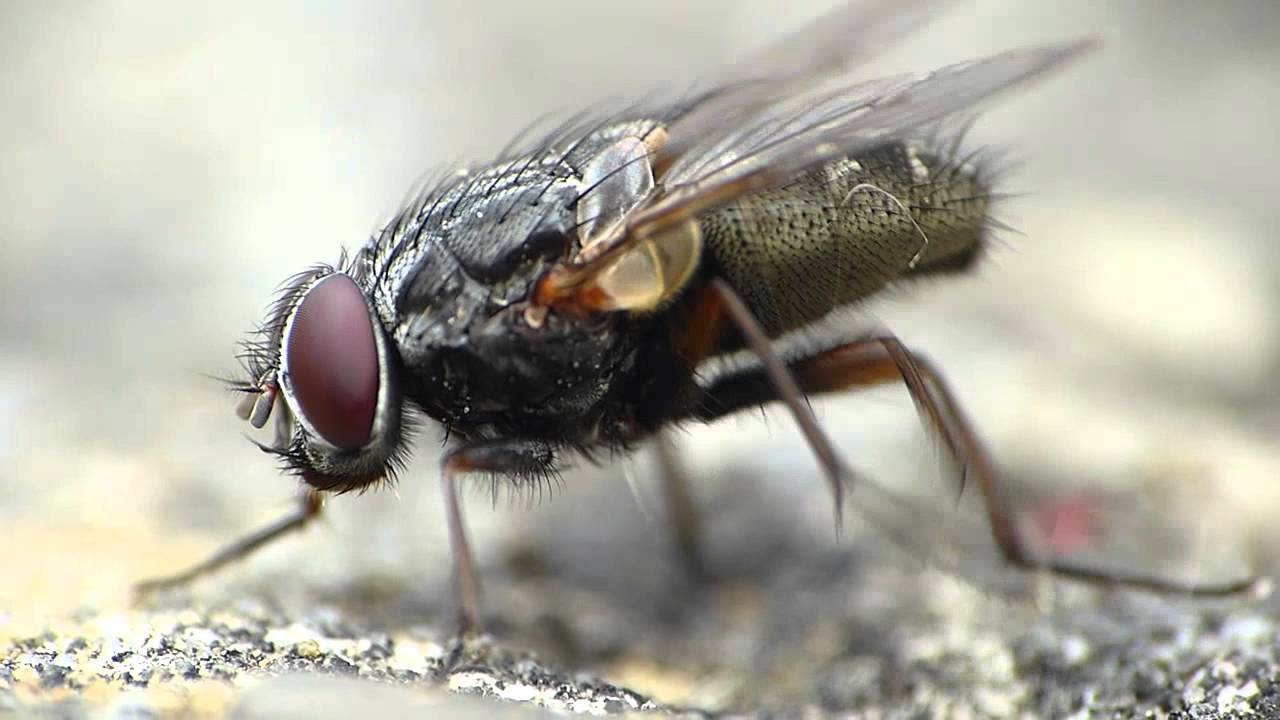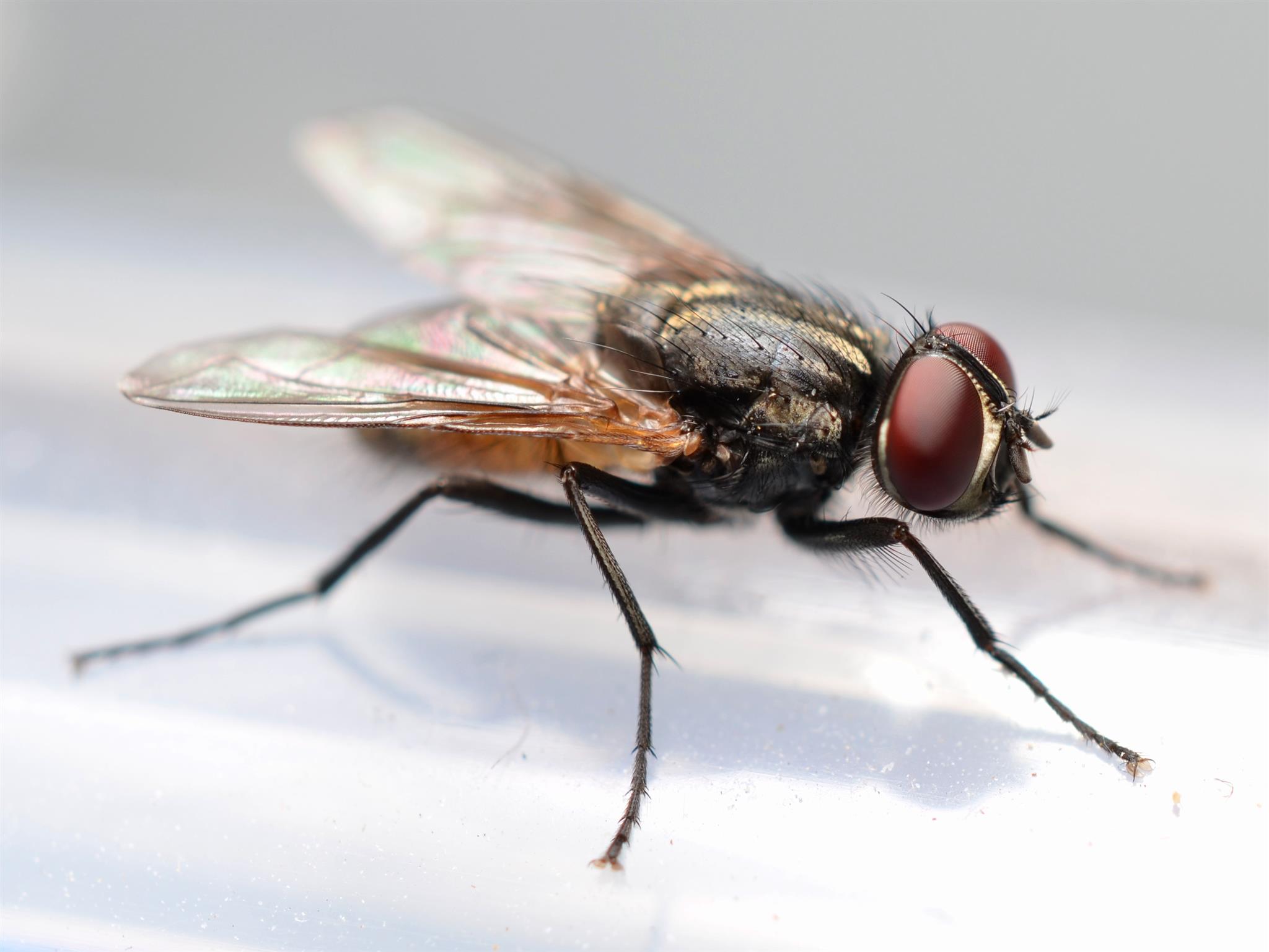Facts, Identification & Control
The House Fly , Musca domestica Linnaeus, is a well-known cosmopolitan pest of both farm and home. This species is always found in association with humans or the activities of humans.
 It is the most common species found on hog and poultry farms, horse stables and ranches. Not only are house flies a nuisance, but they can also transport disease-causing organisms. Excessive fly populations are not only an irritant to farm workers but, when there are nearby human habitations, a public health problem could occur.
It is the most common species found on hog and poultry farms, horse stables and ranches. Not only are house flies a nuisance, but they can also transport disease-causing organisms. Excessive fly populations are not only an irritant to farm workers but, when there are nearby human habitations, a public health problem could occur.
Distribution
This common fly originated on the steppes of central Asia, but now occurs on all inhabited continents, in all climates from tropical to temperate, and in a variety of environments ranging from rural to urban. It is commonly associated with animal feces, but has adapted well to feeding on garbage, so it is abundant almost anywhere people live.

Life Cycle and Description
The house fly has a complete metamorphosis with distinct egg, larval or maggot, pupal and adult stages. The house fly overwinters in either the larval or pupal stage under manure piles or in other protected locations. Warm summer conditions are generally optimum for the development of the house fly, and it can complete its life cycle in as little as seven to ten days. However, under suboptimal conditions the life cycle may require up to two months. As many as 10 to 12 generations may occur annually in temperate regions, while more than 20 generations may occur in subtropical and tropical regions.
Damage and Medical Importance
Flies commonly develop in large numbers in poultry manure under caged hens, and this is a serious problem requiring control. Although this fly species does not bite, the control of Musca domestica is vital to human health and comfort in many areas of the world.
The most important damage related with this insect is the annoyance and the indirect damage produced by the potential transmission of pathogens (viruses, bacteria, fungi, protozoa, and nematodes) associated with this fly.
Pathogenic organisms are picked up by flies from garbage, sewage and other sources of filth, and then transferred on their mouthparts, through their vomitus, feces and contaminated external body parts to human and animal food.
Management
The more commonly used control measures for house flies are sanitation, use of traps, and insecticides, but in some instances integrated fly control has been implemented. The use of biological control in fly management is still at a relatively early stage.
- Sanitation or cultural control
- Biological control
- Integrated fly control
- Chemical control
